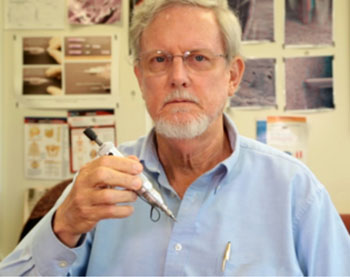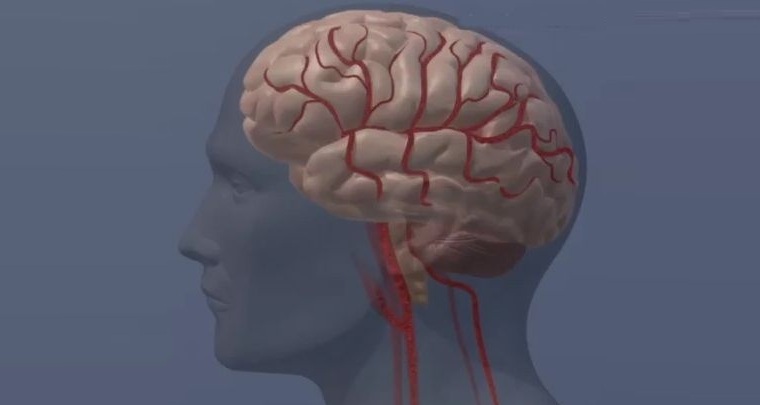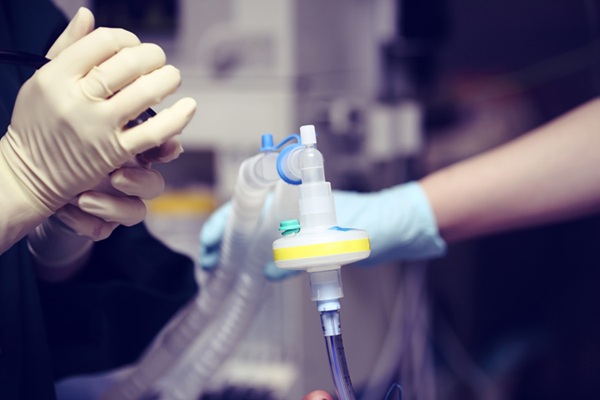Hand-Held Probe Measures Bone Strength
|
By HospiMedica International staff writers Posted on 07 Apr 2015 |

Image: Professor Emeritus Paul Hansma and the OsteoProbe (Photo courtesy of UCSB).
A new device uses reference point indentation (RPI) to measure the mechanical properties of bone at the tissue level.
The OsteoProbe device is a handheld device that uses RPI technology to inspect the bone material’s ability to resist indentation. The output is bone material strength index (BMSi), a figure that represents the ratio of the indentation distance in bone versus a polymathylmethacrylate (PMMA) reference material. The BMSi score represents resistance of the bone to separation of mineralized collagen fibrils. A BMSi of 90 or greater is considered excellent, 80–90 good, 70–80 fair, 60–70 poor, and below 60 is very poor.
A study conducted at the Mayo Clinic (Rochester, MN, USA) demonstrated the device's ability to successfully detect bone quality deterioration in diabetic patients, independent of bone mineral density (BMD). In another study conducted at Leiden University (The Netherlands), the OsteoProbe successfully distinguished between patients with and without fracture, not only in those with osteoporosis but also in those with osteopenia, the precursor to osteoporosis. The OsteoProbe was developed at UC Santa Barbara (UCSB; CA, USA), and is manufactured by ActiveLife Scientific (Santa Barbara, CA, USA).
“Bone fracture is becoming more and more of a serious problem as people live longer,” said Professor Emeritus Paul Hansma, PhD, of the UCSB department of physics. “It's exciting that it's now possible to measure BMSi in living patients and hopefully this can guide physicians in the future in choosing appropriate therapies to prevent bone fracture, especially in elderly people.”
RPI testing uses the location of measurement as the relative displacement reference position. The technique has its origins in the Mohs scale of mineral hardness, in which materials are ranked according to what they can scratch and are, in turn, scratched by. During the course of indentation, a record of the depth of penetration is made, and then the area of the indent is determined using the known geometry of the indentation tip. A record of these values can be plotted to create a load-displacement curve, which can be used to extract more sophisticated mechanical properties of the material.
Related Links:
Mayo Clinic
UC Santa Barbara
ActiveLife Scientific
The OsteoProbe device is a handheld device that uses RPI technology to inspect the bone material’s ability to resist indentation. The output is bone material strength index (BMSi), a figure that represents the ratio of the indentation distance in bone versus a polymathylmethacrylate (PMMA) reference material. The BMSi score represents resistance of the bone to separation of mineralized collagen fibrils. A BMSi of 90 or greater is considered excellent, 80–90 good, 70–80 fair, 60–70 poor, and below 60 is very poor.
A study conducted at the Mayo Clinic (Rochester, MN, USA) demonstrated the device's ability to successfully detect bone quality deterioration in diabetic patients, independent of bone mineral density (BMD). In another study conducted at Leiden University (The Netherlands), the OsteoProbe successfully distinguished between patients with and without fracture, not only in those with osteoporosis but also in those with osteopenia, the precursor to osteoporosis. The OsteoProbe was developed at UC Santa Barbara (UCSB; CA, USA), and is manufactured by ActiveLife Scientific (Santa Barbara, CA, USA).
“Bone fracture is becoming more and more of a serious problem as people live longer,” said Professor Emeritus Paul Hansma, PhD, of the UCSB department of physics. “It's exciting that it's now possible to measure BMSi in living patients and hopefully this can guide physicians in the future in choosing appropriate therapies to prevent bone fracture, especially in elderly people.”
RPI testing uses the location of measurement as the relative displacement reference position. The technique has its origins in the Mohs scale of mineral hardness, in which materials are ranked according to what they can scratch and are, in turn, scratched by. During the course of indentation, a record of the depth of penetration is made, and then the area of the indent is determined using the known geometry of the indentation tip. A record of these values can be plotted to create a load-displacement curve, which can be used to extract more sophisticated mechanical properties of the material.
Related Links:
Mayo Clinic
UC Santa Barbara
ActiveLife Scientific
Latest Critical Care News
- Earlier Blood Transfusion Could Reduce Heart Failure and Arrhythmia in Heart Disease Patients
- 'Smart' Shirt Detects Epileptic Seizures in Real Time
- Skin Patch Measures Effectiveness of Flu/COVID Vaccines in 10 Minutes
- Complete Revascularization Reduces Risk of Death from Cardiovascular Causes
- Tiny Fish-Inspired Robots Navigate Through Body to Deliver Targeted Drug Therapy
- Coronary Artery Stenosis Could Protect Patients from Pulmonary Embolism Effects
- Sweat-Powered Sticker Turns Drinking Cup into Health Sensor
- Skin-Mounted 3D Microfluidic Device Analyzes Sweat for Real-Time Health Assessment
- New Therapeutic Brain Implants to Eliminate Need for Surgery
- Stem Cell Patch Gently Heals Damaged Hearts Without Open-Heart Surgery
- Biomaterial Vaccines to Make Implanted Orthopedic Devices Safer
- Deep Learning Model Predicts Sepsis Patients Likely to Benefit from Steroid Treatment
- Programmable Drug-Delivery Patch Promotes Healing and Regrowth After Heart Attack
- Breakthrough Ultrasound Technology Measures Blood Viscosity in Real Time
- Magnetically Activated Microscopic Robotic Swarms Could Deliver Medicine Inside Body
- Frequent ECG Use Can Identify Young People at Risk of Cardiac Arrest
Channels
Surgical Techniques
view channel
Ablation Reduces Stroke Risk Associated with Atrial Fibrillation
Atrial fibrillation (AFib) greatly increases the risk of stroke, blood clots, heart failure, and death, and millions of people in the U.S. are expected to be affected in the coming years.... Read more
Optical Tracking Method Identifies Target Areas in Robot-Assisted Neurosurgery
Epilepsy occurs when nerve cells misfire and produce uncontrolled electrical bursts in the brain, leading to seizures. While most patients respond to medication, about 30% require more advanced intervention.... Read morePatient Care
view channel
Revolutionary Automatic IV-Line Flushing Device to Enhance Infusion Care
More than 80% of in-hospital patients receive intravenous (IV) therapy. Every dose of IV medicine delivered in a small volume (<250 mL) infusion bag should be followed by subsequent flushing to ensure... Read more
VR Training Tool Combats Contamination of Portable Medical Equipment
Healthcare-associated infections (HAIs) impact one in every 31 patients, cause nearly 100,000 deaths each year, and cost USD 28.4 billion in direct medical expenses. Notably, up to 75% of these infections... Read more
Portable Biosensor Platform to Reduce Hospital-Acquired Infections
Approximately 4 million patients in the European Union acquire healthcare-associated infections (HAIs) or nosocomial infections each year, with around 37,000 deaths directly resulting from these infections,... Read moreFirst-Of-Its-Kind Portable Germicidal Light Technology Disinfects High-Touch Clinical Surfaces in Seconds
Reducing healthcare-acquired infections (HAIs) remains a pressing issue within global healthcare systems. In the United States alone, 1.7 million patients contract HAIs annually, leading to approximately... Read moreHealth IT
view channel
Printable Molecule-Selective Nanoparticles Enable Mass Production of Wearable Biosensors
The future of medicine is likely to focus on the personalization of healthcare—understanding exactly what an individual requires and delivering the appropriate combination of nutrients, metabolites, and... Read moreBusiness
view channel
Philips and Masimo Partner to Advance Patient Monitoring Measurement Technologies
Royal Philips (Amsterdam, Netherlands) and Masimo (Irvine, California, USA) have renewed their multi-year strategic collaboration, combining Philips’ expertise in patient monitoring with Masimo’s noninvasive... Read more
B. Braun Acquires Digital Microsurgery Company True Digital Surgery
The high-end microsurgery market in neurosurgery, spine, and ENT is undergoing a significant transformation. Traditional analog microscopes are giving way to digital exoscopes, which provide improved visualization,... Read more
CMEF 2025 to Promote Holistic and High-Quality Development of Medical and Health Industry
The 92nd China International Medical Equipment Fair (CMEF 2025) Autumn Exhibition is scheduled to be held from September 26 to 29 at the China Import and Export Fair Complex (Canton Fair Complex) in Guangzhou.... Read more














